As a key stop on most Ayutthaya day tours from Bangkok, it pairs effortlessly with visits to Wat Mahathat, Wat Chaiwatthanaram, and Wat Phra Sri Sanphet—offering a complete picture of the city’s religious and royal past.
Included with Ayutthaya Historical Park tickets
Timings
RECOMMENDED DURATION
5+ hours
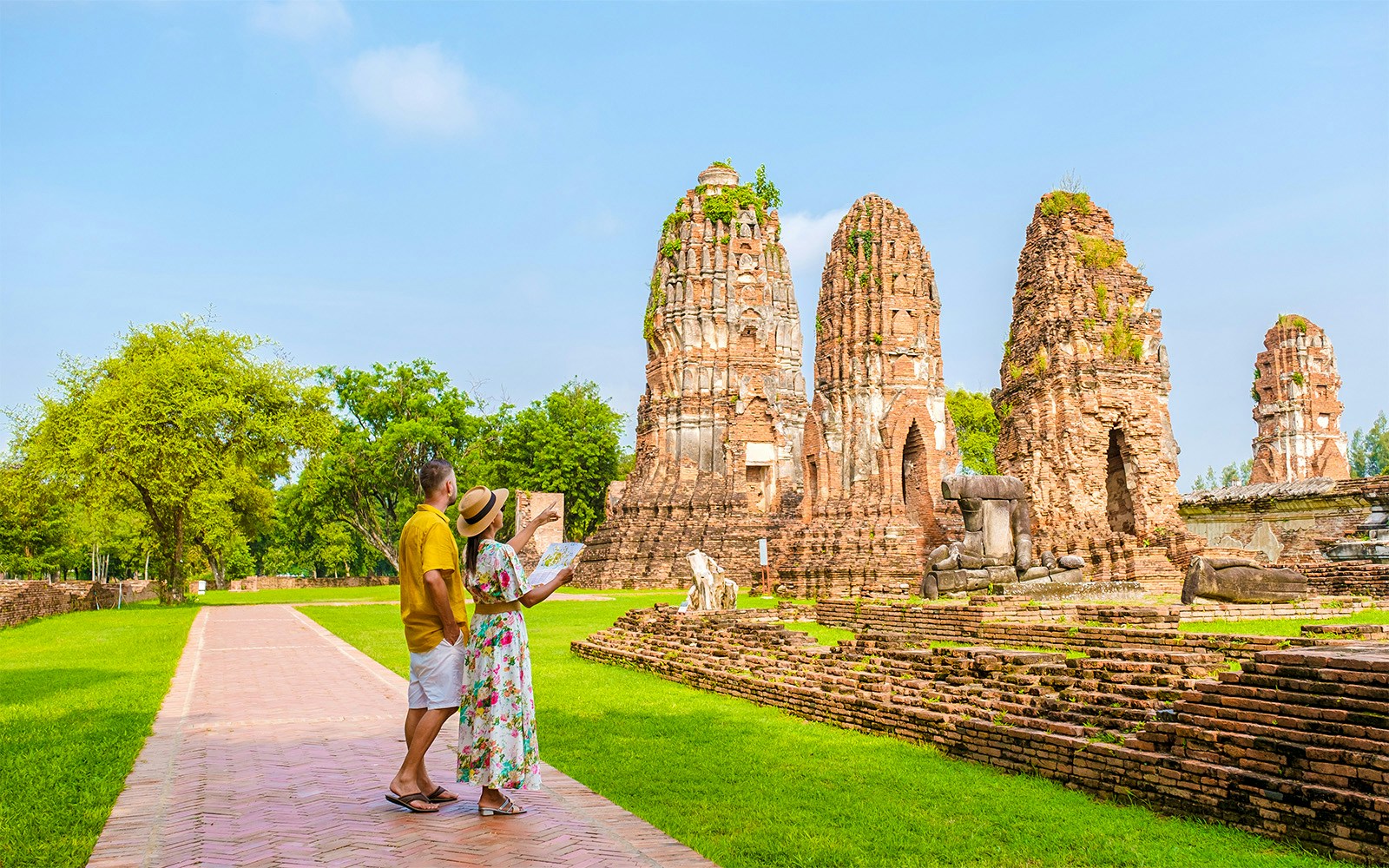
What is the Reclining Buddha?
The Reclining Buddha of Ayutthaya, located at Wat Lokayasutharam, is one of the city’s most iconic and revered landmarks. It is approximately 37 meters in length and 8 meters in height, depicting the Buddha in a serene reclining posture, symbolizing his final moments before attaining ultimate enlightenment. Crafted from brick and covered in stucco, the statue rests on a lotus base, with the Buddha’s head gently supported by his right arm atop a lotus pillow—a posture that signifies peace and spiritual liberation.
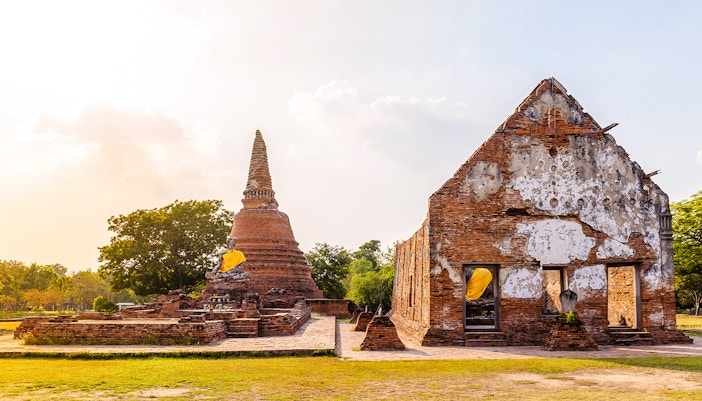
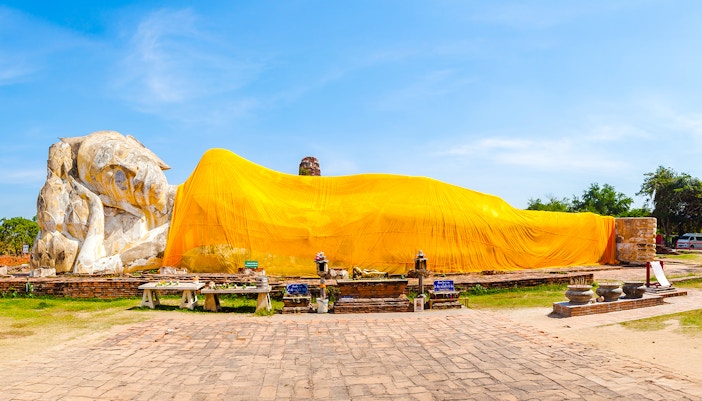

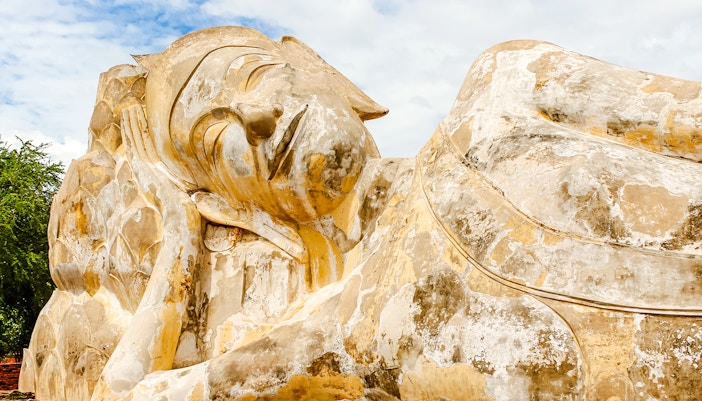
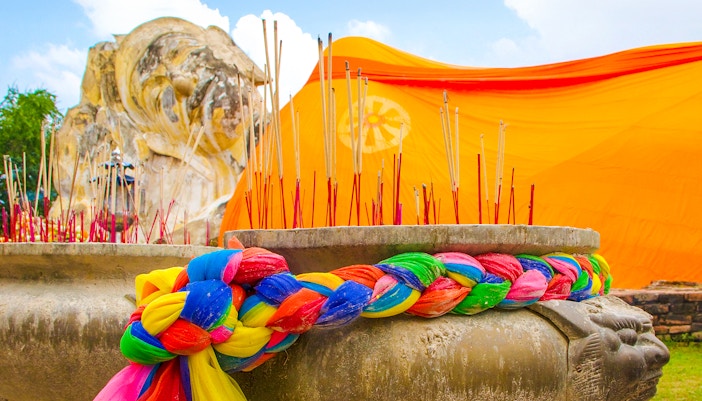
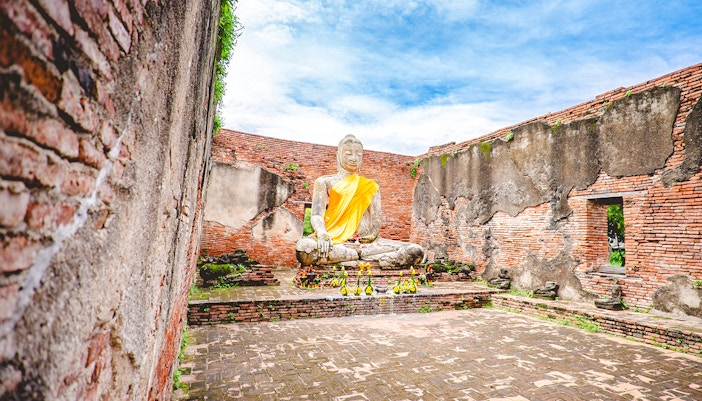
The Reclining Buddha is a large outdoor statue located at Wat Lokayasutharam, depicting the Buddha in a serene lying posture symbolising his final moments before entering parinirvana.
The statue measures approximately 37 meters (121 feet) in length and about 8 meters (26 feet) in height.
It is situated within the grounds of Wat Lokayasutharam in the Ayutthaya Historical Park, Thailand.
The reclining posture represents the Buddha’s transition into parinirvana—his final liberation from the cycle of rebirth.
No, the temple structures of Wat Lokayasutharam are mostly in ruins, and the Reclining Buddha is the only major remaining feature.
Yes, locals and visitors continue to pay respect by offering incense, flowers, and draping the statue with saffron robes.
No, there is no official entrance fee, but donations are welcome.
Early morning or late afternoon is ideal for avoiding the heat and capturing the best lighting for photos.
Yes, photography is allowed, and the open-air setting offers excellent angles for memorable pictures.
You can reach Ayutthaya by train, bus, or private car from Bangkok. The Reclining Buddha is accessible by tuk-tuk or bike within the historical park.
Yes, most guided tours from Bangkok to Ayutthaya include a stop at Wat Lokayasutharam along with other major temples.
Yes, during festivals like Songkran, the statue becomes a focal point for merit-making and local ceremonies.
The statue is original but has undergone several restorations, including major efforts in 1954 and again in the late 1980s.
No, touching or climbing the statue is considered disrespectful and is strictly prohibited.
Dress modestly, covering shoulders and knees, as it is a religious site and an active place of worship.
From Bangkok: Ayutthaya Temple, Railway Market & Damnoen Saduak Floating Market Full-Day Guided Tour with Lunch & Hotel Transfers
From Bangkok: Ayutthaya Temples Guided Half-Day Tour
From Bangkok: Ayutthaya Temples and Bang Pa-In Palace Full-day Guided Tour
From Bangkok: Ayutthaya Temples & Grand Pearl River Cruise Full-Day Guided Tour with Lunch